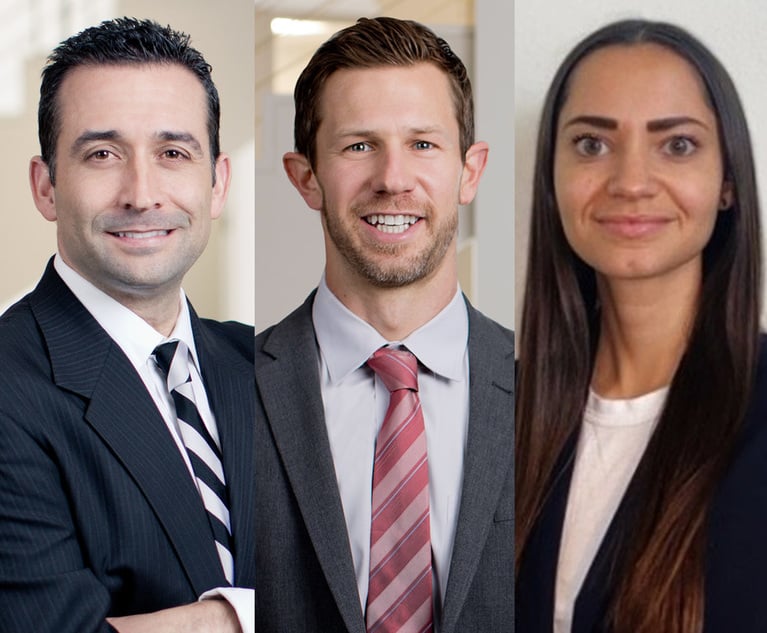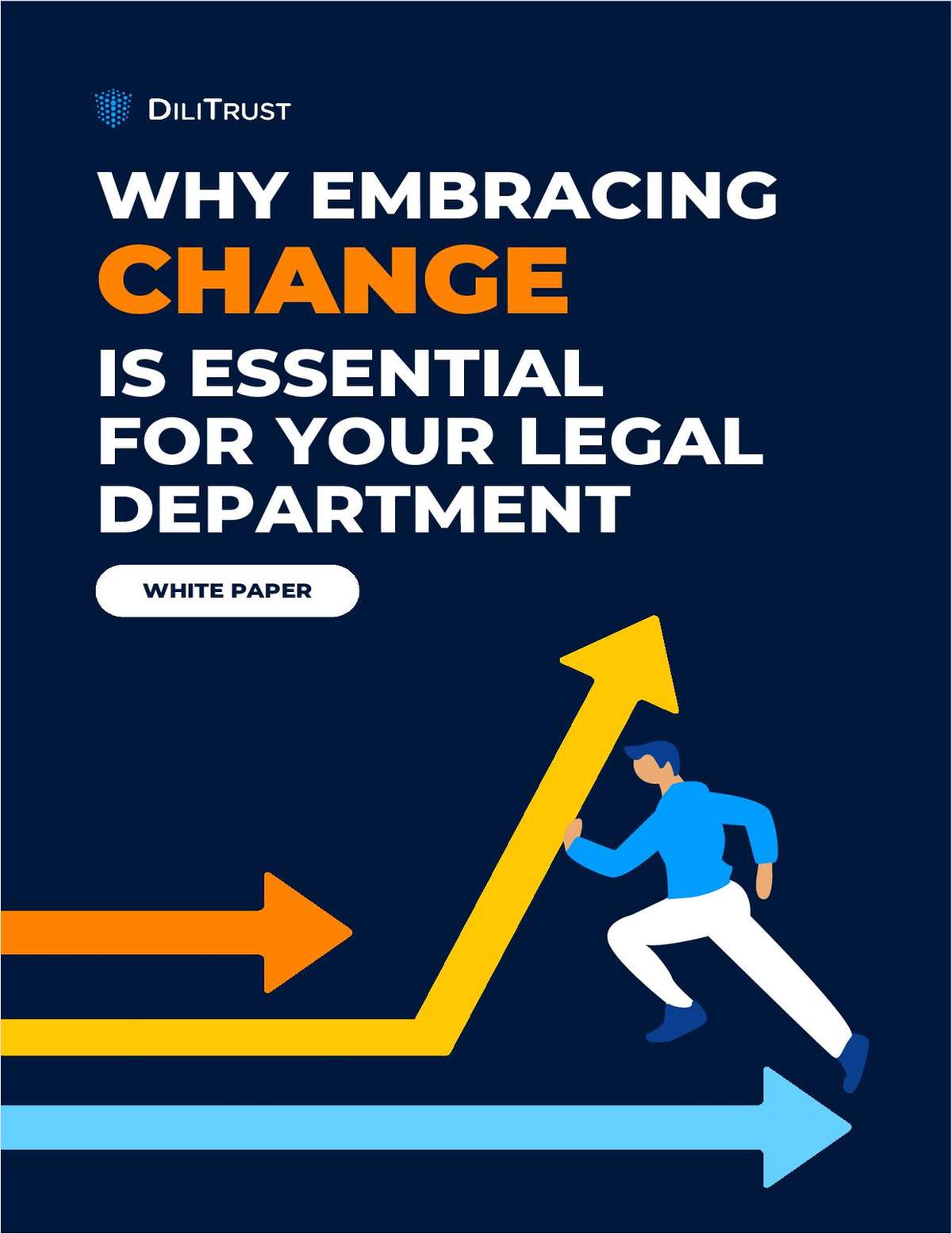 U.S. Court of Appeals for the Ninth Circuit. Photo: Jason Doiy/ALM
U.S. Court of Appeals for the Ninth Circuit. Photo: Jason Doiy/ALM'Order in the Court!' New Federal Clerk Hiring Plan Is Off to Busy Start
This week marks the beginning of a two-year pilot Federal Clerk Hiring Plan, under which participating judges will wait until June after a candidate's second-year of law school to interview and hire them as clerks. It replaces a previous plan that dissolved in 2014.
June 18, 2019 at 02:57 PM
5 minute read
Order may soon return to the chaotic world of federal clerk hiring.
A two-year pilot program put together by four chief circuit court judges is underway, with the goal of reining in the current Wild West atmosphere around federal clerk hiring that has prevailed since the previous hiring plan fell apart in 2014.
Monday was the first day that participating judges could accept applications and arrange interviews with clerk candidates. (This applies only to students who will graduate in 2020, and not those who have already graduated.) How smoothly—or roughly—clerk hiring goes for participating judges this year will be a strong indication of whether the fledgling plan has staying power, or whether it will fall apart just as its predecessor did five years ago, experts say.
“A lot is riding on this. It's characterized as a pilot—an experiment,” said Carl Tobias, a professor at the University of Richmond School of Law who tracks the clerk hiring market. “They said they will revisit it after two cycles. It will be important to see participation and whether there is cheating or whether some judges feel they are advantaged or disadvantaged.”
Early indications are that the first day of the plan was active for clerk candidates, their law school advisers, and the participating judges.
“Yesterday and the lead-up to it was extremely busy,” said Lois Casaleggi, senior director of career services at the University of Chicago Law School. “Our faculty and staff are deeply committed to helping our students through what, for them, is a new and complex process and one that comes at a busy and important time for them in their careers, as our quarter system means that our 2Ls are right at the start of their summer jobs.”
A number of clerkship advisers from other elite law schools did not respond to requests for comment Tuesday, a likely sign that hiring activity has been robust in the plan's first two days and that schools and students are scrambling to arrange interviews with judges and make decisions on offers.
Up until the early 2000s, federal judges hired clerks whenever they pleased. Then in 2003, Judge Harry Edwards of the U.S. Court of Appeals for the D.C. Circuit and the late Edward Becker of the Third Circuit persuaded many of their colleagues to hold off on hiring clerks until September of the applicant's third year of law school.
The voluntary Federal Clerk Hiring Plan gained momentum in 2005 with the introduction of the Online System for Clerkship Application and Review, better known as OSCAR, which allows applicants and law schools to submit materials online and lets judges sort applications by specific criteria, such as school or grade-point average. Automating the application process enabled the Administrative Office of the U.S. Courts to withhold applications until the agreed-on hiring timeline, helping keep judges in line.
But by 2010, the hiring plan was showing cracks with more and more judges jumping the gun and picking clerks before the third year of law school. By 2014, the plan was officially kaput and judges returned to hiring whenever they wanted, increasingly as early as the end of the first year as judges jockey to secure the hottest clerk prospects.
Law schools lamented the change, saying that it had created confusion and chaos. Advisers and students were left to navigate a newly opaque process that was ever-changing. Moreover, judges were now picking clerks with little more than one year of grades to go on, which critics have claimed is too thin a track record.
Then in February 2018, chief judges from four key circuit courts (Merrick Garland of the D.C. Circuit; Robert Katzmann of the Second Circuit; Sidney Thomas of the Ninth Circuit; and Diane Wood of the Seventh Circuit) unveiled a new, two-year pilot hiring plan, under which participating judges would wait to interview and hire applicants until June after their second year of law school.
Law schools have welcomed the reintroduction of a hiring plan, arguing that it will add some transparency to the process and help level the playing field for students who don't have an inside track on clerkships through a faculty member or other connection.
But getting federal judges to act collectively is a major challenge, Tobias said, and it's possible that judges may technically comply with the hiring plan's timelines while also making informal arrangements or promises beforehand.
“There is nothing more independent than an Article III judge,” he said.
Not every circuit has signed onto the plan. The prestigious D.C., Second, Ninth and Seventh have, given that their chief judges designed the plan. And the First and Third circuits have also indicated that they are following the plan. But just because a circuit court has said it's participating doesn't mean every judge on that circuit will adhere to the plan, Tobias cautioned. Most district courts haven't signed on to the plan either.
“I think people will be watching on Monday to see if we have the same problems as before.” Tobias said. “Will there be cheating, which will be hard to detect? Are there going to be crazy scrambles in New York, D.C., and Los Angeles and San Francisco around that date? For someone who's a summer associate in New York, it's not going to work to be in San Francisco the next day, or something. I'm hopeful they won't be as crazy as they used to be, and I heard some horror stories.”
Under the new plan, judges must give candidates 48 hours to decide to accept their clerkship offer, which is intended to give them an opportunity to interview with other judges.
This content has been archived. It is available through our partners, LexisNexis® and Bloomberg Law.
To view this content, please continue to their sites.
Not a Lexis Subscriber?
Subscribe Now
Not a Bloomberg Law Subscriber?
Subscribe Now
NOT FOR REPRINT
© 2024 ALM Global, LLC, All Rights Reserved. Request academic re-use from www.copyright.com. All other uses, submit a request to [email protected]. For more information visit Asset & Logo Licensing.
You Might Like
View All
'Everything From A to Z': University GCs Tested by Legal, Financial, Societal Challenges
6 minute read
'A Horrible Reputation for Bad Verdicts': Plaintiffs Attorney Breaks Down $129M Wrongful-Death Verdict From Conservative Venue

How Uncertainty in College Athletics Compensation Could Drive Lawsuits in 2025

'Basic Arithmetic': Court Rules in Favor of LA Charter School Denied Funding by California Education Department
Trending Stories
Who Got The Work
Michael G. Bongiorno, Andrew Scott Dulberg and Elizabeth E. Driscoll from Wilmer Cutler Pickering Hale and Dorr have stepped in to represent Symbotic Inc., an A.I.-enabled technology platform that focuses on increasing supply chain efficiency, and other defendants in a pending shareholder derivative lawsuit. The case, filed Oct. 2 in Massachusetts District Court by the Brown Law Firm on behalf of Stephen Austen, accuses certain officers and directors of misleading investors in regard to Symbotic's potential for margin growth by failing to disclose that the company was not equipped to timely deploy its systems or manage expenses through project delays. The case, assigned to U.S. District Judge Nathaniel M. Gorton, is 1:24-cv-12522, Austen v. Cohen et al.
Who Got The Work
Edmund Polubinski and Marie Killmond of Davis Polk & Wardwell have entered appearances for data platform software development company MongoDB and other defendants in a pending shareholder derivative lawsuit. The action, filed Oct. 7 in New York Southern District Court by the Brown Law Firm, accuses the company's directors and/or officers of falsely expressing confidence in the company’s restructuring of its sales incentive plan and downplaying the severity of decreases in its upfront commitments. The case is 1:24-cv-07594, Roy v. Ittycheria et al.
Who Got The Work
Amy O. Bruchs and Kurt F. Ellison of Michael Best & Friedrich have entered appearances for Epic Systems Corp. in a pending employment discrimination lawsuit. The suit was filed Sept. 7 in Wisconsin Western District Court by Levine Eisberner LLC and Siri & Glimstad on behalf of a project manager who claims that he was wrongfully terminated after applying for a religious exemption to the defendant's COVID-19 vaccine mandate. The case, assigned to U.S. Magistrate Judge Anita Marie Boor, is 3:24-cv-00630, Secker, Nathan v. Epic Systems Corporation.
Who Got The Work
David X. Sullivan, Thomas J. Finn and Gregory A. Hall from McCarter & English have entered appearances for Sunrun Installation Services in a pending civil rights lawsuit. The complaint was filed Sept. 4 in Connecticut District Court by attorney Robert M. Berke on behalf of former employee George Edward Steins, who was arrested and charged with employing an unregistered home improvement salesperson. The complaint alleges that had Sunrun informed the Connecticut Department of Consumer Protection that the plaintiff's employment had ended in 2017 and that he no longer held Sunrun's home improvement contractor license, he would not have been hit with charges, which were dismissed in May 2024. The case, assigned to U.S. District Judge Jeffrey A. Meyer, is 3:24-cv-01423, Steins v. Sunrun, Inc. et al.
Who Got The Work
Greenberg Traurig shareholder Joshua L. Raskin has entered an appearance for boohoo.com UK Ltd. in a pending patent infringement lawsuit. The suit, filed Sept. 3 in Texas Eastern District Court by Rozier Hardt McDonough on behalf of Alto Dynamics, asserts five patents related to an online shopping platform. The case, assigned to U.S. District Judge Rodney Gilstrap, is 2:24-cv-00719, Alto Dynamics, LLC v. boohoo.com UK Limited.
Featured Firms
Law Offices of Gary Martin Hays & Associates, P.C.
(470) 294-1674
Law Offices of Mark E. Salomone
(857) 444-6468
Smith & Hassler
(713) 739-1250








